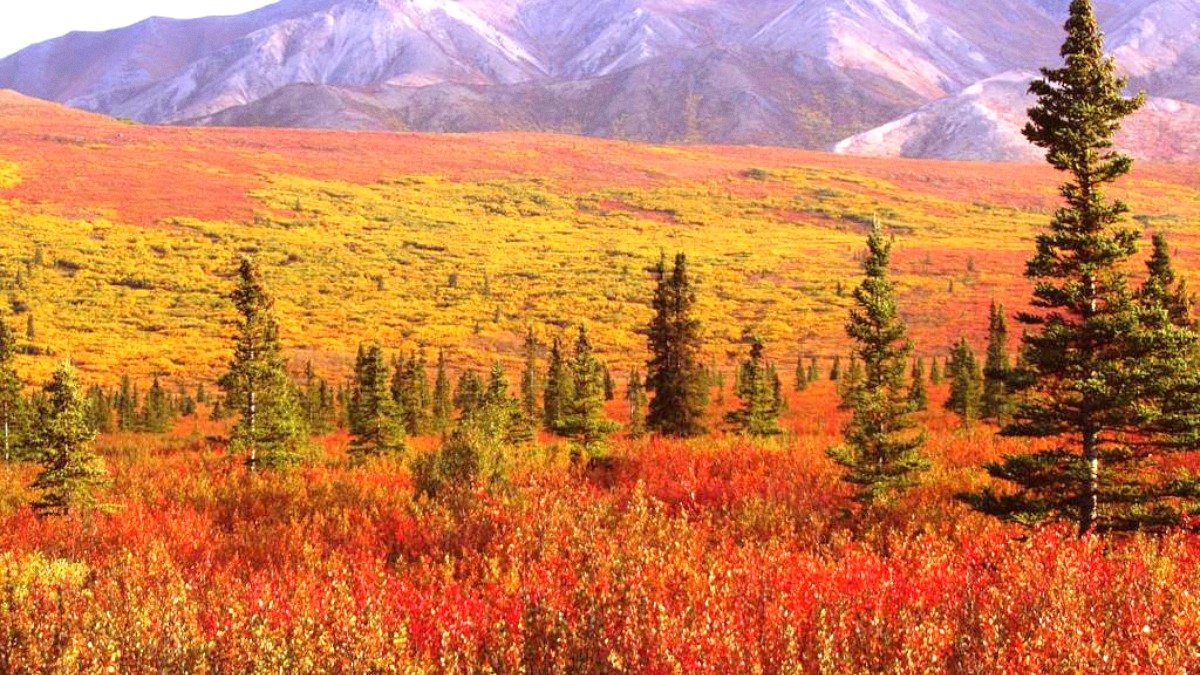
Alaska, USA
Denali draws you into its rhythm, a slow, patient observation of a world shaped by ancient cycles. It is a place where the air feels cleaner, the quiet is profound, and the views stretch beyond comprehension. You come here not just to see animals, but to witness ecosystems functioning as they have for millennia. You come not just to gaze at a mountain, but to feel its overwhelming presence.
Denali National Park and Preserve rests within Interior Alaska, approximately 240 miles north of Anchorage and 120 miles south of Fairbanks. This location positions it squarely in the subarctic, defining its distinctive climate and ecosystems. The park spans an immense 6 million acres, an expanse larger than Massachusetts, showing the sheer scale of wilderness here.
Denali is the most prominent geographical feature, truly the park's core, soaring 20,310 feet (6,190 meters) above sea level. This formidable mountain is a geological marvel, shaped by colliding tectonic plates, forming the Alaska Range that slices through the park. Its immense height creates unique weather patterns, often shrouding its summit, making clear views a cherished moment for visitors. When Denali reveals itself, its scale astounds, dominating the horizon from miles away.
The land of Denali National Park and Preserve is a long and profound history, stretching back thousands of years before its designation as a park. For millennia, various Alaska Native groups, predominantly Athabascan people, lived on and journeyed through these lands. Their traditional territories encompassed vast areas now within the park boundaries. They lived in harmony with the environment, hunting, fishing, and gathering, leaving a legacy of sustainable living. The Athabascan people traditionally called the towering peak "Denali," meaning "The High One" or "The Great One," a name that mirrors their reverence for the mountain's immense stature and spiritual power. Their stories, traditions, and connection to this landscape remain a living part of the region's heritage.
The modern history of the park began in the early 20th century. Conservationists grew concerned about hunting's impact on wildlife populations, especially the Dall sheep, whose numbers faced decline due to unregulated hunting pressure. Inspired by naturalist Charles Sheldon, who visited the area and recognized the urgent need for protection, efforts commenced to establish a national park. On February 26, 1917, President Woodrow Wilson signed the act creating Mount McKinley National Park. The main aim then was to safeguard Dall sheep, and the park's creation also protected the wider ecosystem and its other creatures.
Athabascan people inhabit and travel these lands, naming the great mountain "Denali."
Gold prospector William Dickey publicly names the peak "Mount McKinley."
Mount McKinley National Park established to protect Dall sheep and other wildlife.
Alaska National Interest Lands Conservation Act (ANILCA) expands park, creating Denali National Park and Preserve. Official name change for the combined area.
The U.S. Restores the mountain's official name to Denali.
Today, Denali National Park and Preserve a legacy of both ancient human habitation and modern conservation efforts. It safeguards one of the world's most pristine wilderness areas, allowing its ecosystems to function naturally. The park is a living laboratory for scientific study, presenting educational opportunities for all ages, and delivering unmatched recreational experiences. Visitors observe continuous efforts to preserve this wild land, ensuring future generations behold its awe-inspiring beauty and learn from its past.
Denali National Park and Preserve operates mainly as a wilderness sanctuary, dedicated to preserving its wild character and safeguarding its diverse wildlife. This core guiding principle shapes all park operations and visitor experiences. This dedication to wilderness leaves most of the park undeveloped, presenting an experience of true solitude and nature's immersion.
Visitor access to Denali's vast interior is distinctive among national parks. A single, 92-mile Denali Park Road serves as the main artery into the park. Beyond the first 15 miles (Savage River), private vehicles halt. This restriction protects wildlife, curbs traffic, and maintains the wilderness feel. Visitors travel on park-approved buses for exploration. These buses transport, enabling visitors to disembark for hikes or simply view the landscape and wildlife from their seat. This system aids visitor number management and ecosystem disruption minimization.
Denali beckons a slower pace, observation, and appreciation for the power and beauty of a landscape with wildness.
Denali holds several important designations that underscore its global significance. It is a National Park, protecting its natural and cultural resources for future generations. The addition of Denali National Preserve in 1980 acknowledged the importance of balancing wilderness preservation with subsistence and recreational hunting, a traditional activity for many Alaskans.
Beyond national recognition, Denali is also an UNESCO Biosphere Reserve. This international designation underscores the park's dedication to biodiversity conservation and sustainable development, acknowledging its global ecological worth.
Safeguards natural and cultural resources for all time.
Allows regulated hunting, balancing conservation with traditional uses.
Recognizes global ecological value and promotes sustainable development.
The park's varied ecosystems contribute to its rich ecology. To the north, visitors encounter taiga, also known as boreal forest, characterized by spruce trees, birch, and aspen. This forest thins as elevation climbs, yielding to expansive tundra. Here, the ground remains permafrost, allowing only low-growing shrubs, mosses, lichens, and wildflowers to thrive. This treeless landscape presents wide-open views and makes wildlife spotting more accessible.